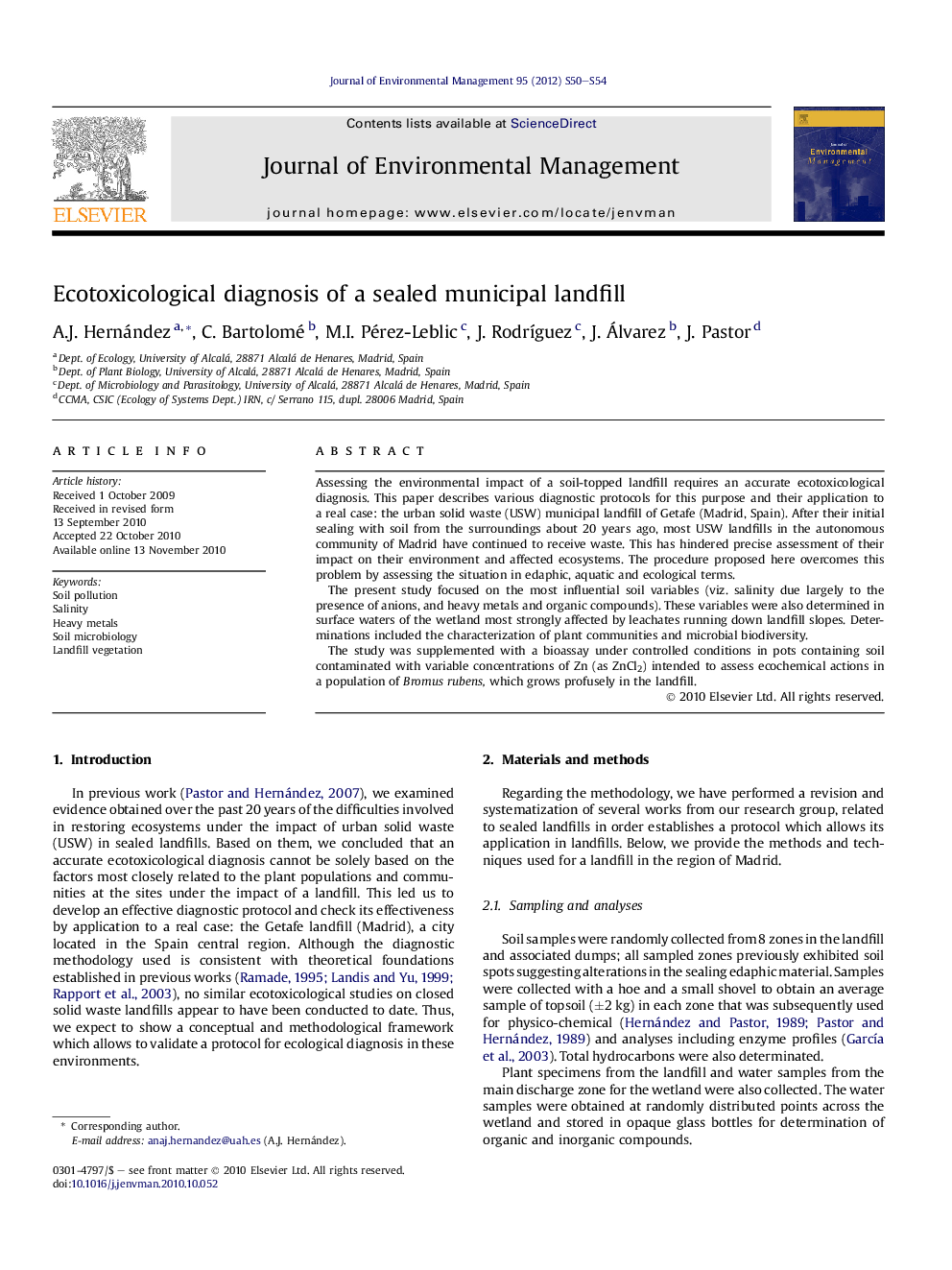| Article ID | Journal | Published Year | Pages | File Type |
|---|---|---|---|---|
| 1057026 | Journal of Environmental Management | 2012 | 5 Pages |
Assessing the environmental impact of a soil-topped landfill requires an accurate ecotoxicological diagnosis. This paper describes various diagnostic protocols for this purpose and their application to a real case: the urban solid waste (USW) municipal landfill of Getafe (Madrid, Spain). After their initial sealing with soil from the surroundings about 20 years ago, most USW landfills in the autonomous community of Madrid have continued to receive waste. This has hindered precise assessment of their impact on their environment and affected ecosystems. The procedure proposed here overcomes this problem by assessing the situation in edaphic, aquatic and ecological terms.The present study focused on the most influential soil variables (viz. salinity due largely to the presence of anions, and heavy metals and organic compounds). These variables were also determined in surface waters of the wetland most strongly affected by leachates running down landfill slopes. Determinations included the characterization of plant communities and microbial biodiversity.The study was supplemented with a bioassay under controlled conditions in pots containing soil contaminated with variable concentrations of Zn (as ZnCl2) intended to assess ecochemical actions in a population of Bromus rubens, which grows profusely in the landfill.
